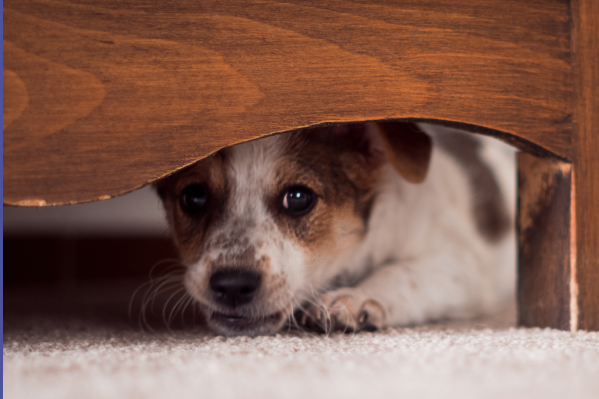Most pet parents have seen their pup pick up something they shouldn't have in their possession. Your first instinct may be to take it out of their mouth, but as you approach them to take it away, their ears pull back and the whites of their eyes begin to show.
If you're not familiar with dog body language, you might miss these warning signs that your dog is going to bite. Having a solid grip on common biting behaviors is not only key to understanding your own pup, but also extremely important as you encounter other people's dogs. We spoke with behavioral veterinarian Dr. Vanessa Spano to better understand the behaviors a dog might exhibit when they're about to bite.
Signs a dog is going to bite
Before we break down the signs that a dog is going to bite, it's important to understand what typically causes biting behavior—and the truth is, it's rarely random.
"It is unusual, although not impossible, that a dog will bite unprovoked," explains Dr. Spano. "However, the most common situation I see biting occur is out of fear, anxiety, and guarding concerns. A dog usually will not go straight to a bite, unless he had a history of exhibiting the warning signs prior to bites that went ignored, the dog endured punishment-based training previously and he is now either too afraid to exhibit non-injurious warning signs prior to the bite or he learned that the earlier warning signs were not getting his point across, or there is a genetic predisposition."
Dr. Spano explains that warning signs typically escalate over time. Early warning signs that a dog is going to bite include:
Yawning
Lip licking
Backing away to create distance
A tucked tail
Ears back/held low
Blinking
Holding a forepaw up
Rolling onto their back and exposing their belly
Overtime, if these warning signs are ignored, dogs will learn to do whatever they can to get their point across. This includes:
Alert/forward ears
Dilating pupils while stiffening and standing in place
Piloerection (raised hairs)
Barking
Snarling
Growling
Lunging
Snapping
Biting
"There are also circumstances where biting is part of the normal predatory repertoire," says Dr. Spano. "Typically with this motivation, dogs are very quiet and are like lions in the jungle. They crouch down upon visualizing their prey, pounce, chase, and grab the prey by their necks or bellies."
What should you do if you notice signs a dog is going to bite?
While early warning signs like yawning, lip licking, whale eyes, and backing away don't automatically mean in that situation the dog is 100% going to bite, these signs are important and should still be paid attention to.
"Dogs are smart; they will learn that if they are continuously put into situations where they're exhibiting these warning signs, but the warning signs are getting ignored, they will need to do whatever they can in future situations."
"Dogs are smart; they will learn that if they are continuously put into situations where they're exhibiting these warning signs, but the warning signs are getting ignored, they will need to do whatever they can in future situations," explains Dr. Spano. "Remember, a bite has an underlying motivation. The single most important thing to do is get up and move away from the dog, even with these early warning signs."
Even if the biting behavior seems relatively innocent—for example, if there is mouthing during play—Dr. Spano notes that it is still important to move your fingers/toes/limbs away, and then redirect the play behavior with a more appropriate outlet, such as a chew toy.
If you have questions about biting behavior, how to reduce the frequency of biting, or anything related to your pup's health, the team at Pawp is here to advise 24/7.
